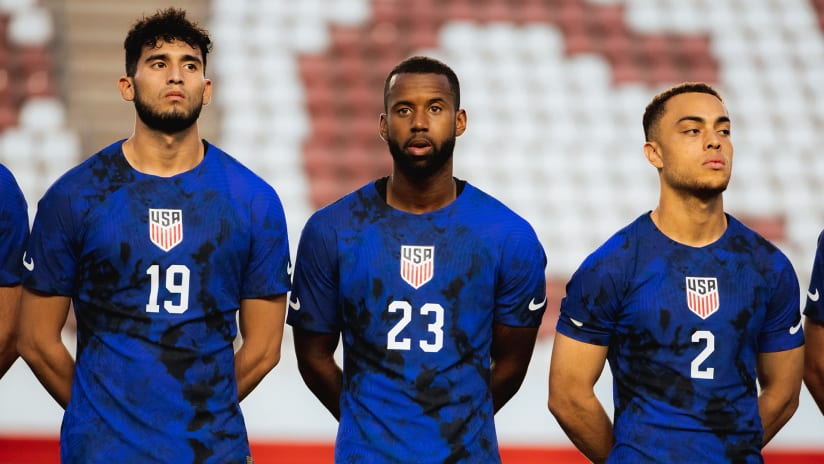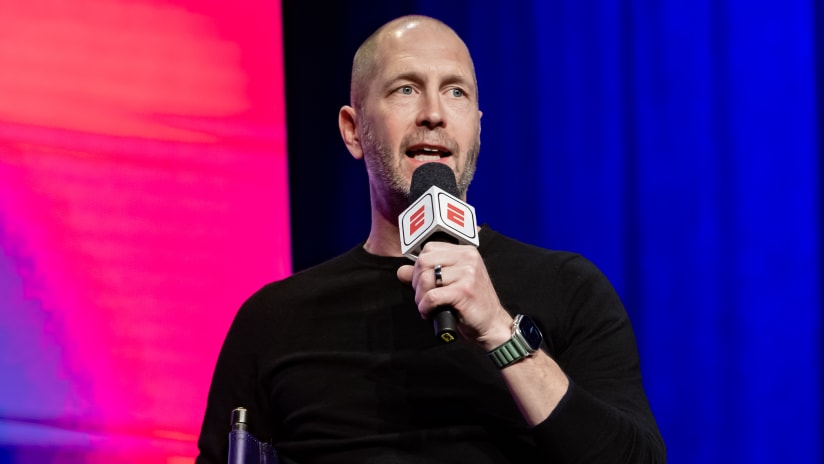“Gregg’s guys.”
If you’ve been following the US men’s national team for any length of time during the current World Cup cycle, you’ve seen some variation on this concept – that head coach Gregg Berhalter has his favored players and they get the benefit of the doubt when it’s time to select rosters and lineups.
On one hand, there’s an element of common sense to this: Of course every coach on earth has their preferences and familiarities. That’s just human nature. But anyone who imputes something beyond that into how Berhalter operates got their theories splashed with cold water on Wednesday evening in Brooklyn.
Loyalty vs. form
Zack Steffen, Berhalter’s longtime goalkeeper of choice for both the USMNT and Columbus Crew, is out. So is FC Dallas winger Paul Arriola, whose endless, selfless, intelligent flank running made him such a useful weapon to this point, displaced by an unexpected break in the endless loop of injuries to wide players.
“That's the worst possible thing, when this guy's been with us since day one, and you’ve got to tell him that he's not coming to the World Cup,” said Berhalter.
FC Groningen striker Ricardo Pepi, the wunderkind whose timely star turns vs. Honduras and Jamaica rescued the Yanks’ qualifying campaign – and by extension, Berhalter’s job – from disaster in its infancy, and who the coach made clear was called in September in large part because of his past body of work, won’t be going to Qatar, either.
Conversely the likes of Antalyaspor striker Haji Wright, Fulham center back Tim Ream and Luton Town goalkeeper Ethan Horvath, faces who’ve been scarce around USMNT camps for many months at a time, are in the team, riding timely waves of form to what is quite likely the biggest tournament of their lives.
“There is, in my opinion, a difference between qualifying in Concacaf and playing in the World Cup,” noted Berhalter in regards to Ream. “And I think Tim, based on what we're seeing, the level he's playing at, he's ready to play in a World Cup for sure.”
In short? That was then, this is now.
“I don't want this to seem like I'm not loyal to my guys,” Berhalter told Men in Blazers’ Roger Bennett in an AMP interview after Wednesday’s selection event. “We're doing the best possible job we can to have the best possible chance for success at the World Cup.”
Culture setters
It’s not that there’s zero room for sentimentality, although the USMNT staff would probably push back against the use of that term. There’s still a pronounced focus on chemistry and culture, as you can see by the care and rationale put into the back end of the 26-man roster.
First, some brutal honesty. Even in a compressed tournament, happening in the midst of the European season in warm desert conditions on the Persian Gulf in the post-pandemic era, with all the physical demands – and expanded squads – that entails, the players further down the depth chart, let’s say roster spots 19-26, face long odds of getting anything more than a fleeting cameo of match action.
I’d probably put the likes of Inter Miami CF fullback DeAndre Yedlin and the Seattle Sounders FC duo of Cristian Roldan and Jordan Morris in that category; Wright and Horvath could wind up there as well. This isn’t definitive, to be clear – we also have ample examples of surprises along these lines, like Jimmy Conrad and Ben Olsen in 2006, or Julian Green in 2014. But those kinds of roster decisions factor in a lot more than just on-field qualities.
“Over the last four years, when Gregg took over, that was his mindset. He wanted to create a good culture,” Roldan told MLSsoccer.com at Brooklyn Steel on Wednesday. “A winning culture, a close-knit culture, and for me, embracing that, understanding that, look, if I don’t play a game, how can I impact the team? Understanding that I understand the tactics really well. How can I help my teammates? So little things like that, I think help my case going into the World Cup squad.
“But I still want to play. I still want to compete, and I think that’s why having a good mentality and mindset going into each and every camp is really important and exactly what Gregg wants.”
Anyone who watched him, at times almost singlehandedly, will the Seattle Sounders to their historic triumph in the 2022 Concacaf Champions League should recognize that Roldan earned his chance on the field. Yet few in the USMNT pool were called up more often while making it into matches less often than him.
That hasn’t mattered much to Roldan so far, and won’t, based on the raw emotions he shared with his parents after he got the call from Berhalter. It was much the same for his close friend and Sounders teammate Morris, who persisted to overcome the painful catastrophes of two torn ACLs from 2018-21 to make this team.
“They’re both incredible guys. That’s the first thing,” said Yedlin of the Seattle duo on Wednesday. “Secondly, they both, whether they’re on the field, whether they’re in training, whether they’re on the bench, they’re both just amazing. They have amazingly positive attitudes. They want the best for the team. They want the best for everybody else. They’re not selfish at all. So those are the kind of guys you want around. Those are the guys that help push the team to be the best they can be.”
Veteran savvy
Yedlin, too, brings more to the table than the sum of his physical and tactical attributes. The sole holdover from the United States men’s last trip to this stage, back in Brazil 2014, he’s a respected elder statesman at the (relatively) tender age of 29 and, to indulge in a bit of Zoomer shorthand, very much a “vibes guy” on a youthful team where vibes are absolutely a key component of identity, performance and prospects of success.
“It’s one of the most tight-knit teams I’ve ever been on,” said the Inter Miami fullback, known for co-curating with Lille winger Tim Weah the USMNT’s musical selections in all gatherings where they’re cleared to fire up the large team-issue Bluetooth speaker.
“Usually with certain teams you see cliques of guys going here, there, there. Whereas [with the USMNT] you’ll have the whole group go somewhere together. That’s very rare to see on a team where everybody is that close together, that everybody wants to be together. Camp can be grueling sometimes because you’re with each other so much, but when you’re with a group that always wants to be together, it shows on the field.”
So in the end, Berhalter and his staff were cold-blooded with certain aspects of the selection process. But they also kept in mind the beating heart at their group’s core. That’s quite a balancing act indeed. By month’s end, we’ll know if it worked.
Edgar Acero and Casey Dunau contributed to the reporting on this piece















